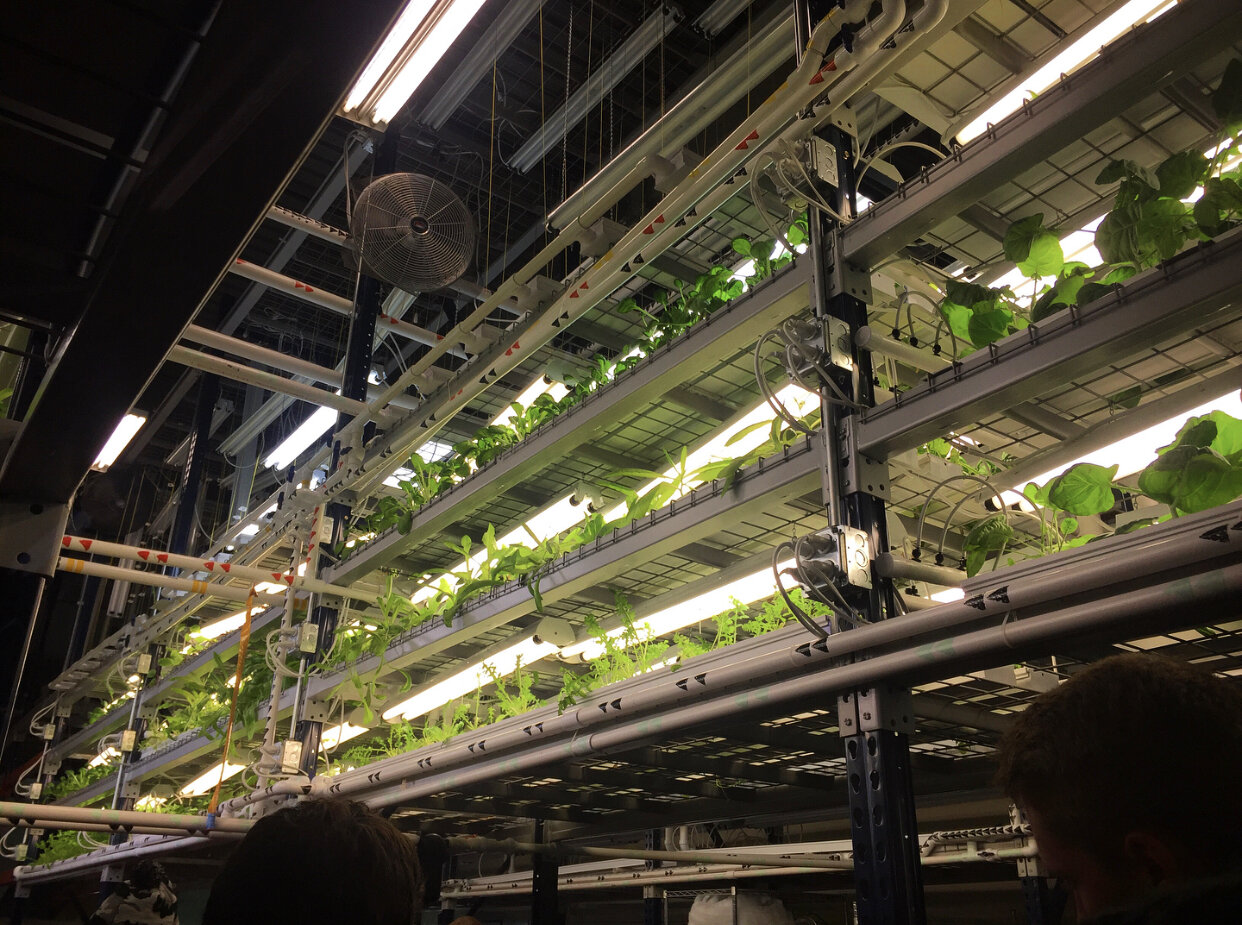Vertical Farming 101
No, that isn’t a picture of a laboratory or a spaceship. It’s a vertical farm. In this post, I’ll tell you all about this up and coming trend in sustainable agriculture.
What is vertical farming?
Vertical farming involves growing crops in horizontal layers stacked on top of each other. Most vertical farms use hydroponics, aeroponics, or other indoor, soilless farming techniques to sustain crops. Vertical farms are common in cities and other areas where croplands are scarce. However, vertical farms are becoming more popular everywhere as people realize their potential sustainability benefits.
What are the benefits of vertical farming?
Compared to traditional agriculture, vertical farming uses land much more efficiently. Rather than spreading plants over large areas of land, farmers can stack crops on top of each other to reduce the total land area. Condensing crops over smaller areas can help avoid some of the problems associated with monoculture agricultural fields (like land degradation, ecosystem destruction and loss of biodiversity), can help us increase yields to feed our growing population, and can bring fresh produce to urban food deserts.
Vertical farms are also beneficial because most of them are located indoors. Growing crops indoors enables farmers to grow during winter or off-seasons, which means they can provide their communities with local food when outdoor farms are closed for the season. Since farmers have greater control over indoor vertical farms compared to traditional farms, they can also introduce beneficial insects and adjust water, nutrients and light levels. This control lets farmers use fewer pesticides, fewer fertilizers and less water compared to traditional farms.
Bottom line: Vertical farms decrease land degradation, pesticide and fertilizer contamination, and water use.
What are the downsides of vertical farming?
Unfortunately, all the control measures of vertical farming use a lot of energy. And as we know, energy use typically leads to greenhouse gas emissions. Unless vertical farms use solar, wind or another renewable energy source, they emit a lot of greenhouse gases.
Most vertical farms also cannot support heavy plants, plants with deep roots, or those that require a lot of sunlight. This means that instead of growing major staple crops like corn, vertical farms need to stick with crops with small root systems, like leafy greens and strawberries. Thus, even though vertical farms can supplement our diets, they will not be able to wholly replace traditional agriculture any time soon.
Depending on the farm, the benefits of vertical farming could far outweigh the downsides of their energy use and limited crop capacity. Especially when comparing vertical farms to conventional agricultural fields, their ability to save land area and decrease pesticide, water and fertilizer use often make them a more sustainable option.
Bottom line: Vertical farms are energy-intensive and can’t support many crops, but their other benefits often outweigh these downsides.
Where can I find vertically farmed produce?
Vertically farmed produce is commonly sold at farmers markets in urban areas. Since many vertical farms are relatively small-scale, they often don't have the resources to sell in major grocery chains. However, some grocery stores may sell produce from local vertical farms. Other vertical farms may sell directly from their farms to consumers. To find vertical farms near you, you'll need to do some research. Look it up online, ask around at the farmers market or co-op, or ask your foodie friends!

